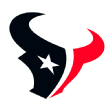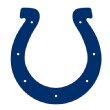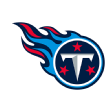We will offer 2020 fantasy football analysis and updated projections off of the most notable NFL free-agent signings and trades throughout the early portion of the signing period.
For a full listing of all the latest moves, news and rumors, be sure to check out our 2020 free-agency tracker.
Major trade reaction
DeAndre Hopkins to Cardinals, David Johnson to Texans
Players joining new teams

TE Rob Gronkowski traded to Tampa Bay Buccaneers
Gronk is back!
The longtime Patriots superstar has ended his retirement and will join his former quarterback Tom Brady with the Tampa Bay Buccaneers. New England agreed to send Gronkowski and a seventh-round pick to Tampa Bay in exchange for a fourth-round pick.
Gronkowski sat out the 2019 season following an underwhelming 2018 campaign, in which he posted a 47-682-3 receiving line in 13 games. That was enough for his seventh fantasy finish of 11th or better at tight end in nine NFL seasons, although his production was consistently restricted by injuries. Gronkowski hasn't appeared in a full 16-game regular season since 2011.
And durability is not where the concerns end.
Head coach Bruce Arians' résumé is not kind to tight ends, as he's literally never had a tight end unit handle an above-average target share. Perhaps that will change in 2020, but unlike in New England, Gronkowski won't be one of Brady's top two targets, as Mike Evans and Chris Godwin won't be short a generous target share. Evans (who leads the NFL in end zone targets since entering the league) and Godwin (16 TDs in the past two seasons) will also be major factors near the goal line, which is notable considering that's where Gronkowski dominated earlier in his career. After scoring 65 touchdowns during his first 80 regular-season games, he returned to earth with 14 scores during his final 35 games with the Pats. It shouldn't be assumed that this will be the Gronkowski who used to break touchdown regression. He hasn't been that guy for a long time.
That was a lot of negatives, but there is plenty of reason for optimism here. In fact, I'd go as far to say that Gronkowski is a player who could easily settle in as a weekly TE1 play. Why? Well, his efficiency never dropped off prior to his retirement. Gronkowski has never played a season in which he was lower than seventh among tight ends in yards per target or yards per reception, and he led the position in average depth of target each of his final three seasons. He's also joining a Buccaneers offense that ranked no lower than sixth in snaps, pass rate and touchdowns last season, even before Brady and Gronkowski were in the mix.
Gronk enters his age-31 season no longer an elite fantasy asset, but still a viable weekly starter likely to miss a few games and provide points in bunches. His name may lead to a risky ADP, but if he's on the board as you approach the double-digit rounds, Gronkowski will be worth a flier.
Rob Gronkowski's early 2020 projection: 78 targets, 52 receptions, 699 yards, 5 TDs (14 games)

QB Tom Brady to Tampa Bay Buccaneers
It was the most anticipated decision in NFL free agency this year, and now we know where the future Hall of Famer will play his football in 2020. For a full breakdown of what to expect from Brady and his supporting cast, click here. (Editor's note: This was written prior to the Bucs' trade for Gronkowski.)


WR DeAndre Hopkins traded to Arizona Cardinals, RB David Johnson to Houston Texans
As this was quite the big deal, a quick recap wouldn't have done it justice. Please click here for full analysis of what this means for Hopkins, Johnson and other key fantasy players on both teams.

WR Stefon Diggs traded to Buffalo Bills
Diggs, 26, wanted out of Minnesota, and he finally got his wish on Monday. He was shipped to Buffalo along with a 2020 seventh-round pick in exchange for 2020 first-, fifth- and sixth-round picks, as well as a 2021 fourth-round pick.
Diggs immediately leaps to the top of Buffalo's wide receiver depth chart, with John Brown slated to work opposite him and Cole Beasley ticketed for slot duties. Brown averaged a hefty 26% target share while operating as Buffalo's No. 1 wideout last season and still failed to finish top 20 at the position in targets (in fairness, he did sit out Week 17). Diggs never cleared a 26% target share during his five seasons in Minnesota and will now be working in a low-volume, run-first Buffalo offense led by inefficient and scramble-heavy Josh Allen. That figures to lead to less -- not more -- production for Diggs. Consider that Allen attempted 20 more passes than Vikings QB Kirk Cousins last season, but completed 36 fewer and threw for 514 fewer yards and six fewer touchdowns.
Diggs has finished as a top-25 fantasy receiver each of the past three seasons, but he has cleared 19th only once. Assuming he's in the 21-24% target share range moving forward, fringe top-25 territory is the level he figures to perform at in Buffalo. John Brown (now more of a flex) and Cole Beasley (shaky PPR flex) will both see fewer targets and should be downgraded. Allen gets a slight boost and, considering his rushing prowess, remains a fine QB1 target.
On the Minnesota side, the trade shouldn't affect Adam Thielen much, but it figures to lead to a slight boost in targets for the fringe WR1. Bisi Johnson currently sits No. 2 on the depth chart, but Minnesota is a strong bet to address that spot via free agency or the draft. Irv Smith Jr. gets a boost and becomes a more intriguing 2020 sleeper, though he'll still need to overcome Kyle Rudolph stealing targets, especially near the goal line.
Stefon Diggs' early 2020 projection: 111 targets, 71 receptions, 1,038 yards, 5 TDs

Melvin Gordon to Broncos
In an attempt to upgrade from their current running back duo of Phillip Lindsay and Royce Freeman, the Broncos sign a player in Gordon whom they've been trying to stop twice per year for the past five seasons.
The former Chargers feature back held out for the first month of 2019 but went on to play 55% of the Chargers' snaps and handle a healthy 62% of the carries and 13% of the targets starting in Week 5. He posted a 162-612-8 rushing line and added 42-296-1 as a receiver. Only 11 backs scored more fantasy points during that span, though one was ex-teammate Austin Ekeler (fifth). Durability is a concern here, as Gordon had missed at least two games in three of his first four seasons with the Chargers. Despite underwhelming efficiency throughout most of his career, Gordon translated heavy volume into three consecutive top-eight fantasy campaigns from 2016 to '18.
Gordon handled 15.5 carries and 4.2 targets per game during 69 games with the Chargers and figures to land close to those marks in a Broncos offense that was eighth run-heaviest in the league last season. Gordon shouldn't have much trouble fending off 2019 lead back Lindsay, who figures to land closer to 160 to 170 touches in a change-of-pace role. This isn't a bad landing spot for Gordon, especially if Drew Lock takes a step forward and gets the offense into scoring range more often than it has in recent seasons. Consider Gordon a fringe top-15 back, whereas Lindsay is now a handcuff who is unlikely to offer standalone flex value. Freeman, meanwhile, is well off the fantasy radar and very well could be traded.
Melvin Gordon's early 2020 projection: 206 carries, 824 yards, 7 TDs; 47 receptions, 371 yards, 2 TDs

Todd Gurley II to Atlanta Falcons
The Rams released Gurley on Thursday and he was on the Falcons by Friday morning.
Considered an MVP candidate by some as recently as the 2018 season, Gurley handled a lesser workload and struggled badly with efficiency in 2019 while dealing with knee and ankle issues. After averaging 4.89 yards per carry (2.11 YAC) on 256 carries and 7.4 yards per play on 78 targets in 14 games in 2018, Gurley's numbers plummeted to 3.84 YPC (1.81 YAC) on 223 carries and 4.2 yards per play on 49 targets in 15 games last season.
Gurley still managed a 14th-place finish in fantasy points (his fifth top-15 in as many tries) thanks to 14 touchdowns, an area where he's had a ton of success throughout his career. Gurley's 70 touchdowns is 20 more than any other running back since he entered the league in 2015 (73 games). By comparison, the man he will replace -- Devonta Freeman -- scored 41 touchdowns in 61 games during that span.
Gurley's health is an obvious concern, as is a Falcons offense that ranked 29th in rushing yardage last season. Part of that was the struggles of Freeman, who ranked 65th out of 68 qualified backs in YAC (1.20), though the team will also need a step forward from second-year right guard Chris Lindstrom and second-year right tackle Kaleb McGary. It's also worth noting that Atlanta has operated one of the league's pass-heaviest offenses in each of the past two seasons and has scored touchdowns through the air at a rate well above league average during the Matt Ryan era (74% in 2019). Both could limit Gurley's upside a bit in fantasy.
At least for now, Gurley is positioned as the clear feature back in Atlanta, with Ito Smith, Qadree Ollison and Brian Hill no threat for lead-back duties. That's enough to lock Gurley into the RB2 mix. We know the 25-year-old has tremendous upside, but his durability concerns and underwhelming 2019 production should give us some hesitation in selecting him as a top-10 play.
Todd Gurley's early 2020 projection: 221 carries, 897 yards, 7 TDs; 44 receptions, 370 yards, 2 TDs

WR Brandin Cooks traded to Houston Texans
Houston continued its efforts to replace DeAndre Hopkins by trading a second-round pick to the Rams in exchange for Brandin Cooks and a 2022 fourth-round pick.
Cooks is still in his prime at age 26, but has been traded three times in the past four years. In Houston, he'll compete for targets with fellow wideouts Will Fuller V, Randall Cobb and Kenny Stills. Despite constantly moving around the country, Cooks has finished four of the past five seasons as a top-15 fantasy wide receiver. Primarily a vertical threat, Cooks ranked no lower than ninth in yards per target in three consecutive seasons prior to an injury-plagued 2019 campaign. Concussions are an ongoing concern for Cooks, but, if healthy, he's in good shape as one of Deshaun Watson's top targets. He should be on your flex radar, though there's certainly WR2 upside.
As for the other Houston receivers, Fuller is likely to work as the team's No. 1 target when healthy, but it can't be overlooked that he's missed at least five games each of the past four seasons. He gets a slight downgrade and, like Cooks, is best viewed as a flex with upside. Cobb and Stills take a big hit in value and are no more than bench fliers. Cobb is the preferred choice, especially in PPR.
Flipping over to the Rams, new No. 3 WR Josh Reynolds is the big winner here, though keep in mind that Sean McVay adjusted his scheme in the second half of last season, pivoting from "11" personnel a league-high 90% of the time when passing during Weeks 1-13 to 75% (15th highest) during the final month. That change led to reduced roles for secondary receivers Cooks and Cooper Kupp and a significantly larger role for TE Tyler Higbee. Reynolds' boost in targets puts him on the late-round-flier radar, but this offense is no longer likely to support three fantasy-relevant wideouts. Woods and Kupp remain quality WR2 options and Higbee a midrange TE1.
Brandin Cooks' early 2020 projection: 94 targets, 58 receptions, 820 yards, 4 TDs

Robby Anderson to Carolina Panthers
Anderson joins the Panthers following four solid seasons with the Jets. Anderson went undrafted back in 2016, but went on to appear in 62 of 64 games with New York, hauling in 206 passes for 3,034 yards and 20 touchdowns. Anderson was limited to one strong fantasy campaign (18th in 2017), but finished 39th and 40th over the past two seasons. In Anderson's defense, a position-high 33% of balls thrown his direction were "off target" last season. In Carolina, the 26-year-old vertical threat will work alongside DJ Moore and Curtis Samuel at wide receiver, with Christian McCaffrey and Ian Thomas also ticketed for roles of significance. New head coach Matt Rhule figures to use plenty of three-WR sets, but consistent targets for anyone other than McCaffrey or Moore is far from a sure bet, especially with a bit of an unknown at quarterback in the form of super-conservative Teddy Bridgewater. Moore remains a fringe WR1, whereas Anderson and Samuel are borderline top-40 options.
Robby Anderson's early 2020 projection: 101 targets, 56 receptions, 818 yards, 5 TDs

Breshad Perriman to New York Jets
With former top perimeter receiver Robby Anderson signing Panthers earlier in the day, the Jets found his replacement in the form of Perriman. The 2015 first-round pick struggled during a pair of seasons in Baltimore before getting his career back on track in Cleveland in 2018 and, to an even larger extent, in Tampa Bay last season. Perriman was a situational target in the Buccaneers' offense for most of 2019, but flourished down the stretch while Mike Evans and Chris Godwin were out. During the final five weeks of the season, Perriman posted a 25-506-5 receiving line on 37 targets and trailed only Michael Thomas and DeVante Parker in fantasy points. Perriman's NFL résumé includes more struggles than success, which makes him a risky investment, but he's well positioned for an every-down role in the Jets' offense. That's enough to make him a fine late-round flier with WR3 upside.
Breshad Perriman's early 2020 projection: 48 receptions, 782 yards, 5 TDs

RB Jordan Howard to Miami Dolphins
Howard signed a two-year deal with the Dolphins following a successful rookie-contract stint with Chicago and Philadelphia. Howard has racked up 3,895 rushing yards in his four pro seasons, which trails only Ezekiel Elliott and Todd Gurley II for most during the span. Howard is a very effective rusher but has struggled as a receiver, averaging an ugly 5.4 yards per play on 119 career targets. A top-20 fantasy back during each of his first three seasons, Howard has almost zero competition for backfield touches as Miami's roster currently stands. That figures to change no later than April's draft and, should Miami add an impact rookie back, Howard would figure to settle into a borderline flex option in non-PPR leagues. If Howard surprisingly ends up as the team's unquestioned starter, however, he'd be positioned for 15-plus carries most weeks and would thus be on the RB2 radar. This will be a situation to monitor throughout the summer.
Jordan Howard's early 2020 projection: 220 carries, 942 yards, 6 TDs; 29 receptions, 220 yards, 1 TD

TE Austin Hooper to Cleveland Browns
Kevin Stefanski made heavy use of his tight ends while leading a run-heavy Vikings offense during the 2018 and 2019 seasons. Cleveland's new head coach will now have former Falcons star TE Austin Hooper at his disposal for 2020 and beyond.
Hooper has finished no lower than seventh among tight ends in routes, targets, receptions or receiving yards in each of the past two seasons. He posted career-high marks in targets (96), receptions (75), receiving yards (787) and touchdowns (six) in 2019 despite missing three games. Hooper was fantasy's top-scoring tight end prior to suffering an injury in Week 10.
Moving on from Matt Ryan and Atlanta's pass-heavy offense hurts Hooper's stock a bit, but a near-every-down role in a Cleveland offense that also includes Odell Beckham Jr., Jarvis Landry, Nick Chubb and third-year QB Baker Mayfield positions the fifth-year tight end as a mid-to-back-end TE1 option. David Njoku's value takes the biggest hit here, as he's unlikely to see enough volume to produce close to top-12 numbers at the position.
Austin Hooper's early 2020 projection: 72 targets, 53 receptions, 568 yards, 5 TDs

QB Philip Rivers to Indianapolis Colts
Jacoby Brissett is out and Rivers is in as the Colts' starting quarterback. Rivers' 2019 campaign wasn't terribly unlike the well-documented performance of Jameis Winston. Rivers completed 66.0% of his passes (10th-best) and averaged 7.81 YPA (11th) but also tossed 20 interceptions (the second time in three seasons he has reached that mark) and posted a 48.6 QBR (ranked 22nd). Rivers hasn't finished a season better than eighth among quarterbacks in fantasy points since 2013 and has one top-10 finish during the span. He offers almost nothing with his legs (34 yards and zero touchdowns over the past three seasons).
Rivers' supporting cast will be a bit different in Indianapolis, as his primary pass-catchers (T.Y. Hilton, Parris Campbell, Zach Pascal, Jack Doyle) won't be quite as good, but his offensive line will be substantially better. Even if Rivers' efficiency continues to dwindle, he was good enough to finish top five in the league in completions and passing yards last season, which should offer some optimism for the team's top pass-catchers. Rivers shouldn't be considered a viable QB1 option, but Hilton remains a WR2, Doyle a TE2 and Campbell a fine post-hype sleeper. Marlon Mack shouldn't be affected much but could see a few extra targets and goal line attempts with the improved quarterback situation.
Philip Rivers' early 2020 projection: 344-of-531, 3,979 yards, 24 TDs, 15 INTs; 30 rushing yards

TE Hayden Hurst traded to Atlanta Falcons
The Falcons didn't take long to find their replacement for Austin Hooper. Only a couple of hours after Hooper agreed to sign with the Browns, Atlanta traded 2020 second- and fifth-round picks to Baltimore in exchange for Hayden Hurst and a 2020 fourth-round pick.
Hurst was a first-round pick back in 2018, but he spent last season third in line for snaps in a tight end-friendly Ravens offense that also featured Mark Andrews and Nick Boyle. Hurst posted a 30-349-2 receiving line and ranked sixth at tight end in both catch rate (77%) and yards per target (8.9). Hurst has yet to eclipse a 58% snap share in 30 career games, but he figures to blow by that mark often in Atlanta while operating as a near-full-time two-way tight end. Tight ends have handled a target share no lower than 15% and no higher than 19% during Dan Quinn's five seasons as head coach. As the roster stands, that bodes well for Hurst, whose primary competition for targets will be reserves Jaeden Graham and Carson Meier. Hooper averaged a 15% target share in pass-heavy Atlanta last season, whereas Hurst wasn't far off that mark at 9% in run-heavy Baltimore.
In fantasy, Hurst is obviously a bit risky, as the 26-year-old has seen more than four targets in a game only twice in his career. However, he's also well-positioned for a breakout season as Matt Ryan's third or fourth option in the passing game. He should be considered a TE2 option with upside. This move has little impact on the Ravens, as Mark Andrews (24% target share average in 2019) and Nick Boyle (10%) will both be back.
Hayden Hurst's early 2020 projection: 73 targets, 51 receptions, 579 yards, 4 TDs

Emmanuel Sanders to New Orleans Saints
56. 42. 69.
No, those aren't Monday's Powerball numbers. They're the total target number for the Saints' No. 2 wide receiver behind Michael Thomas the past three seasons. Enter Sanders, who averaged nearly 100 targets per season during 10 years with the Steelers, Broncos and 49ers. The 33-year-old wasn't much of a factor after being traded to the NFC champion 49ers last season, averaging 4.7 targets per game, but nonetheless put together a solid regular season with a 69% catch rate, 9.1 yards per target and a 66-869-5 receiving line in 17 games.
Sanders won't be asked to handle anything close to No. 1 duties in New Orleans with Thomas, Alvin Kamara and Jared Cook locked into significant roles. That said, there's a path here to 5-to-7 targets per game from the slot in the Saints' high-volume, high-scoring offense. Sanders doesn't figure to be a major asset near the goal line (he's cleared six touchdowns in a season once in his career), but he'll see enough volume to warrant weekly flex consideration.
Emmanuel Sanders' early 2020 projection: 56 receptions, 739 yards, 6 TDs

QB Teddy Bridgewater to Carolina Panthers
The Panthers changed head coaches during the offseason and now they'll also have a new quarterback. With Cam Newton set to be traded or released, Carolina signed Bridgewater as its new starter. A first-round pick back in 2014, Bridgewater appeared in 29 games with Minnesota, missed nearly the entire 2016 and 2017 seasons due to injury and eventually settled in as Drew Brees' backup in New Orleans. Bridgewater was forced into extended action in six games last season and was competent, throwing nine touchdowns and two interceptions. He completed 68% of his passes (sixth-best), though his 6.1 average depth of throw was easily lowest in the league. Though New Orleans scored more than a full touchdown per game less with Bridgewater than with Brees, Bridgewater was fantasy's No. 11 scoring quarterback during the span. In Carolina, he'll have a decent supporting cast, led by DJ Moore, Curtis Samuel and Christian McCaffrey. Bridgewater's conservative nature and minimal rushing contributions (31 rushing yards last season) certainly limit his ceiling in a big way. He's best viewed as a mid- to back-end QB2.
Teddy Bridgewater's early 2020 projection: 358-of-552, 3,941 yards, 21 TDs, 11 INTs; 87 rushing yards, 1 TD

WR Randall Cobb to Houston Texans
Eyeing a "replacement" for some of DeAndre Hopkins' league-high 1,038 targets since entering the league, the Texans signed Cobb to a three-year contract on Monday night. Cobb hasn't finished a season as a top-30 fantasy receiver since 2014, but he is positioned fairly well as Deshaun Watson's primary slot receiver, with oft-injured Will Fuller V and Kenny Stills on the perimeter. Cobb won't help much near the end zone (nine touchdowns and 12 end zone targets over the past three seasons), but the 29-year-old very well could flirt with flex territory in deeper PPR leagues with a target share in the 20% range. That may be pushing it with everyone healthy, but if we assume missed time for Fuller (five-plus missed games each of the past three seasons), Cobb can certainly get there. Consider him a late-round bench option.
Randall Cobb's early 2020 projection: 79 targets, 53 receptions, 691 yards, 4 TDs

Eric Ebron to Steelers
Ebron has found a new home after spending the first six seasons of his career in Detroit and Indianapolis. The 2014 first-round pick underachieved during his time with the Lions, but a breakout season in 2018 saw him catch 66 balls for 750 yards and 13 touchdowns. He crashed back to earth last season, thanks to predictable regression to the mean but also due to the loss of Andrew Luck, posting a 31-375-3 receiving line in 11 games.
Now with Pittsburgh, the soon-to-be 27-year-old will compete with Vance McDonald (who recently restricted his contract) for the top spot on the depth chart. Ebron figures to pace the duo in receiving, but that may not be enough to generate much fantasy appeal in an offense that ranked 26th in tight end targets last season. Is it possible Pittsburgh will throw to the tight end more often now? Sure, but probably not by much. First of all, the Steelers love three-wide sets (they've ranked above average in the "11" personnel package in each of the past 13 seasons) and have JuJu Smith-Schuster, Diontae Johnson and James Washington in place at that position. Second, the league average for tight end target share for a team is 21%. Pittsburgh hasn't gone above 20% even once during the aforementioned 13 seasons. Ebron is best viewed as a back-end TE2 as long as McDonald is in the mix.
Eric Ebron's early 2020 projection: 63 targets, 39 receptions, 453 yards, 4 TDs

TE Jimmy Graham to Chicago Bears
Graham is headed to Chicago following two seasons with the division-rival Packers. The 33-year-old isn't the fantasy force he was during his prime years in New Orleans and Seattle and is coming off his worst statistical season since his rookie year. Graham played 55% of the snaps, handled a 12% target share and posted a 38-447-3 receiving line despite appearing in all 16 of Green Bay's regular-season games. Graham finished eighth at tight end in pass routes, but he was 21st in fantasy points. He figures to contribute as a vertical threat down the seam, but he'll be a part-time player with limited fantasy appeal. Consider him a back-end TE2. The likes of Trey Burton, Adam Shaheen and Demetrius Harris remain off the fantasy radar.
Key re-signings/tags

RB Derrick Henry gets franchise tag from Tennessee Titans
Henry returns as the feature back in Tennessee after pacing the NFL in carries (303), rushing yards (1,540) and rushing touchdowns (16) in 2019. Henry has been an absolute force as a rusher, ranking no lower than third in YAC each of the past three seasons. His heavy recent workload is a concern, but the good news is that he's 25 years old and had not cleared 215 carries in a season prior to 2019. Henry's minimal workload as a receiver (career-high 18 receptions last season) will continue to limit his fantasy output. Coupled with a probable dip in rushing production, he should be valued as a back-end RB1.

WR Amari Cooper re-signs with Dallas Cowboys
The Cowboys took it down to the wire, but Cooper, 25, is back on a five-year, $100 million extension. Cooper posted a 79-1,189-8 receiving line last season in what was his first full campaign with Dallas. That was enough production for the 10th-most fantasy points among wide receivers. Believe it not, Cooper has yet to finish a season better than 10th in fantasy points or fantasy points per game. However, with Dak Prescott also back in Dallas, Cooper shouldn't struggle to continue producing borderline-WR1 numbers. That's exactly where he belongs on 2020 draft boards.

RB Kenyan Drake gets transition tag from Arizona Cardinals
Drake was somewhat surprisingly tagged Monday and will resume duties as Arizona's feature back in 2020. The 2016 third-round pick was traded from Miami to Arizona at the 2019 trade deadline and went on to handle 66% of the team's carries (15.4 per game) and 14% of the targets (4.4) from Week 9 on. He ranked fourth among running backs in fantasy points during the span. Arizona's offense should only improve in Kliff Kingsbury's and Kyler Murray's second season, so Drake very much has back-end RB1 upside. As far as the rest of the backfield is concerned, David Johnson was traded to Houston and Chase Edmonds takes a big hit in value and is no more than a late-round flier.

WR A.J. Green gets franchise tag from Cincinnati Bengals
Green is back in orange after missing the entire 2019 season due to injury. Green will turn 32 this season and has missed at least six regular-season games in three of the past four seasons. Despite the durability woes, he's remains a fantasy force, ranking no worse than 16th in fantasy points per game in any of his eight NFL seasons. Green will obviously be a risky investment, but the superstar receiver can be considered a WR2 target in 2020 fantasy drafts. The expectation is he'll be catching passes from rookie QB Joe Burrow.

QB Dak Prescott gets exclusive franchise tag from Dallas Cowboys
Prescott will be back under center for Dallas following his best professional season in 2019. He ranked no lower than sixth among quarterbacks in pass attempts (596), completions (388), passing yards (4,902), passing touchdowns (30), yards per pass attempt (8.2) and average depth of throw (9.4), all while dealing with a league-high 30 drops. Also a factor as a rusher (52-277-3), Prescott finished a career-best second at the position in fantasy points. Armed with a terrific line, as well as Michael Gallup (and perhaps Amari Cooper), Prescott should be considered a solid QB1 option.

QB Ryan Tannehill re-signs with Tennessee Titans
Tannehill signed a four-year extension with Tennessee following an impressive bounce-back 2019 campaign in which he completed 70% of his passes (third in NFL) and averaged 9.6 yards per pass attempt (first). The Titans scored three-plus touchdowns in 12 of Tannehill's 13 starts, which helped the 31-year-old to the third-most fantasy points among quarterbacks from Week 7 on. He is a strong bet for statistical regression to the mean, so with the Titans' extremely run-heavy offense also in mind, the veteran passer is best viewed as a solid QB2 option in 2020 fantasy leagues.
